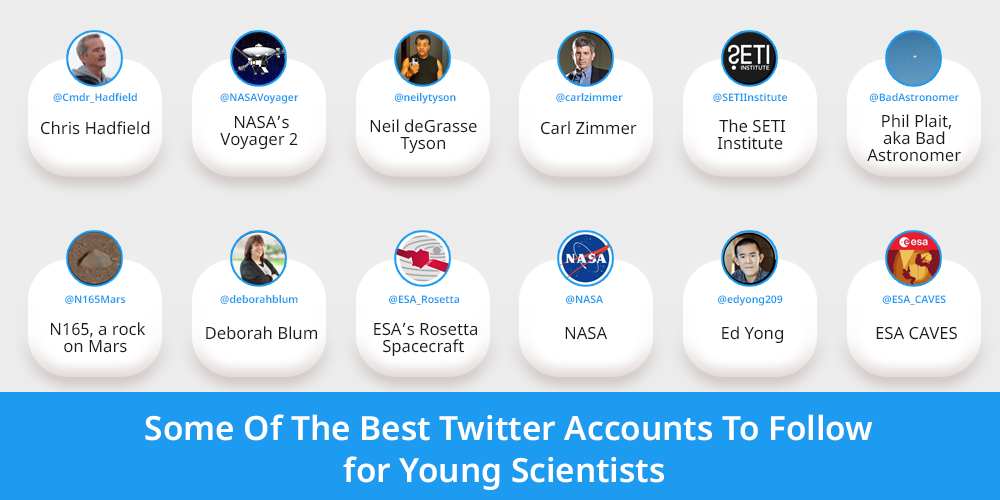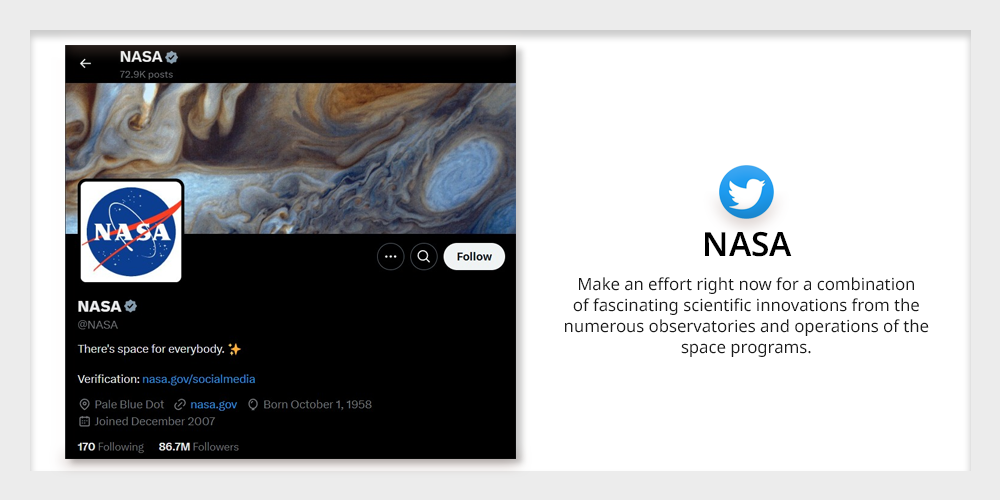
Business expansion and medical treatments are made possible by science. And today, several scientists are interacting with non-scientists on social media to spread the word about the importance of research. Additionally, they are speaking in a language that every person can understand.
Twitter is one of the most well-liked social media websites for scientists. There are about 486 million Twitter users worldwide as of July 2022. It is also an excellent tool for connecting with people with similar interests, indicating its ability to link big groups across geographical borders. It’s understandable why so many scientists have embraced this networking tool to spread their experience among others.
Table of Contents
Some Of The Best Twitter Accounts To Follow for Young Scientists

Below are the best Twitter accounts to follow if you are a science enthusiast . Whether you’re a black belt-wielding Twitter expert, a tinkerer in the social networking environment, or a beginner searching for anyone (or some) to track, don’t miss these old and young scientist accounts to follow.
1. Chris Hadfield

Although Chris Hadfield is no longer in orbit, he has still been tweeting some incredible pictures of the planet and the universe. Follow him as he explores the globe while sharing his cosmonaut experiences.
2. NASA’s Voyager 2

Although Voyager 2 was launched earlier, it has lagged behind Voyager 1, its sister spacecraft, in leaving the solar system, having done so in 2012. This profile tweets status reports for both missions that are occasionally very lyrical and somewhat mysterious. For much less occasional but more living thing voyage reports, check @NASAVoyager.
3. Neil deGrasse Tyson

DeGrasse Tyson tweets information on astrophysics and astronomy. When he isn’t engaged in delivering the revival of everyone’s favourite pop science Television program or serving as Director of the Hayden Planetarium in New York.
4. Carl Zimmer

Carl Zimmer is a brilliant science writer who blogs primarily about life sciences at The Loom. However, he also regularly tweets about news and fascinating articles from the larger field of science.
5. The SETI Institute

The SETI Institute is looking for intelligent alien life. However, they also tweet updates on discoveries in astrobiology and reports of new distant planets that are pertinent to what they refer to as the “greatest deep quest in the history of mankind.” You’ll want to be among the first to learn if they ever discover anything.
6. Phil Plait, aka Bad Astronomer

Slate’s Phil Plait writes a blog on lousy science and astronomy. Follow him for a more comprehensive analysis of the most recent astronomy headlines (and some beautiful space images).
7. N165, a rock on Mars

Yes, you must also follow Curiosity Rover’s official NASA Twitter. But you can do worse than watch N165 if you’re looking for a slightly more sarcastic view of what the spacecraft is up to on the planet’s surface. The Martian rock, also known as Coronation, gained notoriety after the Mars rover fired its internal light at it for the first time. It now broadcasts information on Curiosity’s travels.
8. Deborah Blum

Receiving the Pulitzer Prize For all things toxic, Deborah Blum is a ready scientific journalist. The most user-friendly chemistry weblog on the internet is likely her Wired blog Elements. Her tweets provide more of the same in addition to intelligent commentary on awful news from somewhere else.
9. ESA’s Rosetta Spacecraft

The Rosetta spacecraft, operated by the European Space Agency, is about to emerge from its extended sleep in interstellar space. If everything is going according to plan, this should reach a meteor by August of this year when it does.
10. NASA

We are unsure how to assist anyone who previously followed Nasa on Twitter but managed to get to this point without doing so. Make an effort right now for a combination of fascinating scientific innovations from the numerous observatories and operations of the space programs.
11. Ed Yong

Author Ed Yong covers what he refers to as the “wow rhythm” on the National Geographic website Not Exactly Rocket Science. He tweets a tonne of fantastic science articles that you should study, and he gathers them into a daily update so you won’t miss anymore.
12. ESA CAVES

ESA astronauts must undergo a different expedition, which means spending two weeks in a cavern before being able to travel to orbit. The operations assist develops leadership skills and imitating the solitude of rotation—this profile tweets information and images from those caverns. When a mission is not in progress, it transmits incredible pictures and information about Earth and space.
Conclusion
Twitter is becoming more and more significant in science communication as a platform for discussing published work with peers and the general audience. As a result, there are a lot more Twitter accounts for science. Some offer the humorous side of science while others keep you updated with the latest happenings in the science world.



